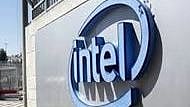Tech giant Intel has announced plans to eliminate approximately 24,000 jobs—roughly 22–25 percent of its workforce—by the end of 2025, reducing its count of “core employees” from about 99,500 at the end of 2024 to around 75,000. The move is led by new CEO Lip‑Bu Tan, who assumed leadership in March 2025 and is guiding a sweeping cost‑cutting overhaul.
In addition to workforce reductions, Intel has canceled major planned expansions in Germany and Poland, and is consolidating assembly and testing operations from Costa Rica into larger sites in Vietnam and Malaysia, with over 2,000 Costa Rica employees expected to shift into engineering and corporate roles. Construction progress on its large Ohio semiconductor plant is also being slowed to align spending with actual demand.
These changes come on the heels of Intel’s weaker quarterly performance. In the second quarter of 2025, the company posted a net loss of USD 2.9 billion on revenue of USD 12.9 billion, including approximately USD 1.9 billion in restructuring costs. Despite flat year‑over‑year revenue, the losses underscore broader issues. Investor confidence slipped after the firm forecast steeper losses in Q3, triggering a 5–6 percent slide in its share price in Frankfurt trading.
The core driver behind these decisions is Intel’s shift in focus to artificial intelligence (AI). Tan has emphasized that Intel had overinvested in factory capacity without securing sufficient demand; under his leadership, future spending will be disciplined and aligned with customer needs. The company now prioritizes building AI‑focused chip capabilities and strengthening its portfolio in data center and edge AI applications, while retrenching from non‑core businesses such as automotive chips and its RealSense division.
Intel joins a host of other tech giants who are also conducting mass layoffs. This includes Microsoft, Meta, Amazon, and Google. Perplexity CEO Aravind Srinivasan and OpenAI CEO Sam Altman, both, have warned of possible job cut effects due to the increase in adoption of AI in the industry.
As part of the restructuring, Intel has also reduced management layers by about 50 percent, aiming to streamline decision‑making and flatten the organization. Tan has stated: “Every investment must make economic sense. We will build what our customers need, when they need it, and earn their trust through consistent execution.”
Intel expects these actions to yield approximately $17 billion in savings through 2025, targeting greater efficiency and renewed competitiveness amid mounting pressure from rivals such as Nvidia, AMD, and TSMC in the rapidly evolving AI chip sector.












